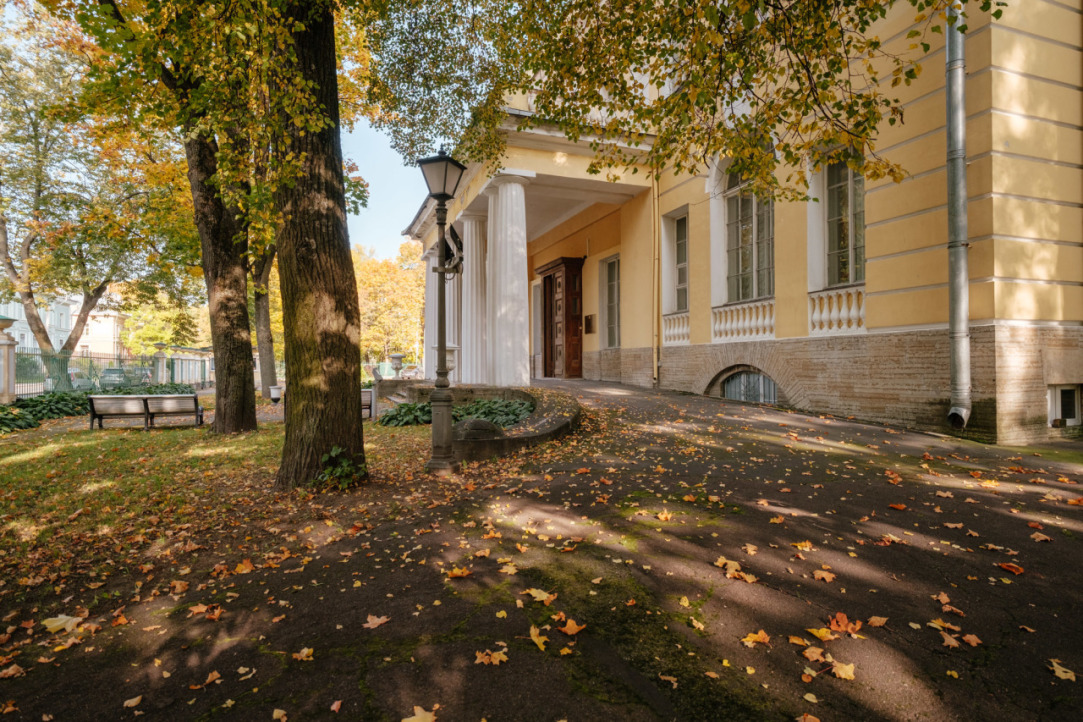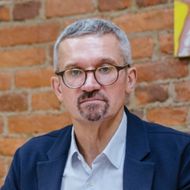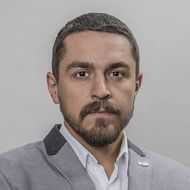The Third Kotchoubey Readings: The Birth of a New Format for Digital Interactions
The Third International Kotchoubey Readings ended on October 9. Held online for the first time, this year’s event looked at ‘Digital Solutions for Private Collectors.’ Following are the topics the experts discussed and the results HSE students achieved.

Every year, Russian and international experts gather for the Kotchoubey Readings to discuss the phenomenon of private collecting and its role in the preservation of cultural heritage. This year’s conference was devoted to the use of digital tools in working with collections.
In his opening remarks, HSE Campus in St. Petersburg Director Sergey M. Kadochnikov noted that the topic 'Private Collections and Digital Technologies' sounds almost banal in 2020 and online events have become an ordinary part of life — even though such a thing seemed unimaginable as recently as last winter. He said that digital technologies make it possible to find the proper balance between online and offline experience and that HSE University, along with other universities and cultural institutions, is engaged in that search.
The remote format has made it possible to expand the geographic reach of this year’s event.

Sergey Kadochnikov,
Director of HSE University-St.Petersburg
The online format has enabled us to expand the conference audience to include listeners and experts from a wide variety of Russian regions, including the HSE campuses in Moscow and Perm. Many experts have joined us from Estonia, Italy, France, and Canada who otherwise could not have participated without such a simple tool as remote conferencing.
Despite the positive aspects of holding the event online, Mr Kadochnikov expressed the hope that next year’s conference would be held once again in the Kotchoubey Centre, where participants can immerse themselves in the cultural and historical heritage of Tsarskoye Selo and the Kotchoubey family.
Student Projects for Private Collections
Students from the HSE St. Petersburg Master’s programme Cultural and Event Tourism Management and Bachelor's programme in History spoke at the Third Kochubey Readings, presenting the results of their work in the online project ‘Digital Solutions for Private Collectors.’
One group worked under Alexandra Murre, director of the Kadriorg Art Museum in Estonia. The students presented a platform they had developed based on the private collection of art historians Sergey and Tatiana Podstanitsky. The platform serves as a public database that the owners of the collection, museum managers and any interested individuals with Internet access can use. It makes it possible to manage the collection, navigate between individual items and monitor the movement of those items between exhibitions. Also, the database provides in-depth information about the various artefacts that can prove useful for researchers.
The second group of students, supervised by Museum of Russian Icons Deputy Director Sergey Bogatyrev, consisted of a digital presentation of that museum’s Ethiopian collection. The students analysed the digitalised collection and offered proposals on how the museum could position it for Russia viewers. The group also put forward several recommendations for improving the visual presentation of the collection on the museum’s site and suggested making it possible for users to share impressions of what they had seen on social networks.
Working with collections in digital space requires the knowledge of art critics and historians, as well as managerial skills, and both groups of students noted how meaningful such interdisciplinary cooperation on these projects had been for them. Moreover, the projects allowed students to demonstrate their hands-on skills by developing websites, working with databases and analysing audiences.
Serving as an expert speaker, Dinara Gagarina, Dean of the Faculty of Social Sciences and Humanities of the HSE campus in Perm, commented on the work of the groups. She noted the depth of their analysis, systematic approach and focus on concrete problems that the museums and collections face

Dinara Gagarina,
Dean of the Faculty of Social Sciences and Humanities (HSE University - Perm)
I am very pleased to see universities cooperate with both public and private museums. I think that such student projects have great educational potential. This interdisciplinary cooperation between the university as an educational institution and museums as cultural establishments helps our programmes improve and acquaints museums more closely with researchers and society. Furthermore, such interaction enables us to share professional and other experience.
Participants of this session agreed that such interdisciplinary project groups should be expanded in the future to include IT students and professionals as well as museum and art historians. This would make for more precise work and enable students to avoid mistakes that result from their unfamiliarity with certain technologies.
Digital Exhibitions and Working with Archives: Experience and Case Studies
Experts presented their experience working with digital exhibitions over several sessions of the Third Kotchoubey Readings. Their presentations became part of the discussion on how the pandemic has changed the way museums work.
Pushkin State Museum of Fine Arts Deputy Director of Digital Transformation Vladimir Opredelenov spoke about virtual exhibitions and tours available to viewers on the museum’s website and shared his experience in making the transition online.
Among its current projects, the museum is working to create a digital duplicate of the exhibition From Dürer to Matisse. This is a 4D space enabling the visitor to move about as though he or she were really in a museum. The viewer can peep around corners, see three-dimensional exhibits, read all the information about them and listen to an audio description. During the pandemic, museum workers conducted online tours for the audience just as they would have done if they were physically present with visitors.

Vladimir Opredelenov,
Deputy Director of Digital Transformation, The State Pushkin Museum of Fine Arts, Moscow
Approximately seven million people have already viewed the online exhibition, as compared to the 1.5 million visits the museum normally receives each year. What’s more, 60% of the online views came from Russia’s regions.
Many people would like to experience these artworks in person, but relatively few have that opportunity. We no longer even ask whether a virtual component is necessary or distinguish between physical and virtual visitors. We have only one type of guest — a viewer — some of whom arrive online, and some offline. And we work just as hard for both.
The Pushkin Museum is also working on the project '100 Ways to Live a Minute', an online platform where viewers can not only encounter works of art from Russia and other countries but also listen to artists and curators talk about various exhibits and the work being done with them.
Irina Guzevich of the Maurice Halbrachs Centre of the School for Advanced Studies in the Social Sciences in Paris spoke about her idea for the '100 Ways to Live a Minute' project. Ms Guzevich proposed recreating the Cabinet of Machinery in Madrid's collection assembled by the engineer, mechanic and architect Agustín de Betancourt. Many of the documents and items from that collection have been lost, and the rest are in various museums and private collections around the world. A thematic online exhibition would make it possible to collect those scattered elements in one place as well as simulate the missing mechanisms and machines.
Multimedia Art Museum Director Olga Sviblova contributed to the discussion about developing museums’ presence in the digital space. She underscored the importance of museums making the digital transition and outlined the challenges that modern cultural institutions face

Olga Sviblova,
I believe that all museums, without exception, must work with digitalization. You have to understand that today's children are different and that clicking [a mouse] on a screen is more natural for them. A very small percentage of those children will visit museums. Of course, we must preserve the [physical] space for encountering art, but for the new generation, that art will live online. We need new platforms and new rules for working with post-Internet art because a new type of art is emerging before our eyes
Anastasia Pavlovskaya, editor for the Prozhito [Lived] centre for the study of first-person documents, shared her unique experience of working with personal archives. The centre digitizes people’s diaries, photographs and personal materials. Since 2015, more than 800 volunteers have enabled the site to maintain a corpus of Russian-language digital archives.
In her presentation, Ms Pavlovskaya examined what could be considered family archives and which materials are worthy of digitisation. She noted that the Prozhito project considers all personal experience important for the study of the past, including for purposes of research. After all, a document that one historian finds unnecessary might be valuable to another.
Alexandra Murre concurred with Ms Pavlovskaya, emphasizing that in today’s highly politicized world and with contradictory information in the media, personal digital archives are a source of true stories for both scholars and ordinary users.
Digital Technologies in Offline Exhibitions
Online platforms are not the only ones to use new technologies in working with collections. Now, cultural institutions integrate this new knowledge into offline exhibitions to produce stronger impressions on viewers. Alexandre de Vogüé, co-owner of the Château de Vaux-le-Vicomte in France, shared one such example.
To attract tourists, it was necessary to create a tour that would immerse visitors in the history of the château as it was 300 years ago. However, the managers and museum workers deliberately rejected the idea of integrating tablets and projectors into the tour to avoid creating distractions for the audience.
A fascinating historical narrative read by professional actors was developed. Visitors don earphones and 3D sound immerses them in the atmosphere of the château. The story and its presentation were worked out to the smallest detail: the soundtrack includes such background sounds as the rustling of dresses, the footfalls of the individual characters and even the crackling of flames from a fire. As a result, visitors use a technology that does not distract them from the exhibition but instead helps them become immersed in their journey and feel the spirit of the place
Egor Yakovlev, co-founder and director of development of the izi.TRAVEL platform presented conference participants with audio solutions for museums and municipal exhibitions. The company offers cultural institutions and the originators of exhibitions the option of making audio guides of their expositions. Such audio works can be recorded for private collections of various sizes and can draw visitors into the family history.
One example of integrating a private narrative into a larger history comes from Joost Schokkenbroek, executive director at the Vancouver Maritime Museum. The National Maritime Museum in Amsterdam—where Mr Schokkenbroek also serves as head curator of science programmes—mounted an exhibition devoted to the 75th anniversary of the liberation of the Netherlands from German occupation. Especially for the event, the museum recorded an interview with an Amsterdam resident who had lived through the entire occupation of the city. The woman shared her personal story and archives, which were then woven into the overall exhibition.
Irina Smirnova, the curator of scientific, educational and cultural projects for Panasonic, spoke about digital solutions for museums. In particular, she discussed an exhibition by the Alexander Solzhenitsyn House of Russia Abroad that is devoted to immigrants. For this exhibition the company prepared an immersive installation of restored chronicles that enable viewers to watch history unfold with their own eyes.
Collaborations with Government-run Platforms
Vadim Vankov, director of the Department of Information and Digital Development of the Russian Ministry of Culture, spoke at the end of the second day of the Kotchoubey Readings. He talked about the PRO.Culture.ru platform that unites the professional museum community and publishes information on various events and exhibitions. The platform is open to all cultural institutions and is integrated into the Yandex.Afisha service. This helps increase its reach to potential viewers, including viewers of museums’ online offerings. More than 70,000 online events were added to the portal in the first eight months of 2020 alone.
The National ‘Culture’ project provides museums with free use of the Artefact platform that employs augmented reality technology enabling museums to create virtual presentations of their exhibitions
Although all the proceedings of the Third Kotchoubey Readings were held remotely, the speakers will receive real souvenirs from the organizers — red hearts with two golden crosses representing the coat of arms of the Kotchoubey family, each handmade by gold embroidery expert Galina Gusarova. The hearts, which the speakers will receive by post, serve not only as a memento of participation in the conference but also of the fact that the conference has been held under the patronage of the Kotchoubey family since the readings began in 2018.
Sergey M. Kadochnikov
Vladimir V. Opredelenov
See also:
‘Law Itself Is Art and an Important Part of Culture’
The HSE Faculty of Law and the Pushkin State Museum of Fine Arts presented the results of the joint project ‘Law in Painting.’ The project aims to show the different aspects of interaction between law and art, to find common grounds between them, and to clarify the legal content of works of art.
Totally Focused: Movie Nights at Pokrovka
In April, the HSE building on Pokrovka hosted two movie nights: one on the Day of Russian Animation, and other on the Day of Culture. The events allowed international students to get acquainted with Russian culture through works of cinematography. Each student enjoyed popcorn while studying detailed information about the movie on special printouts.
Ghosts Full of Life: Spirits and Ghosts in Korean Doramas
South Korean TV series feature a whole typology of ghosts. Alexandra Tarasova, visiting lecturer at the HSE School of Media, Associate Professor in the Faculty of Cultural Studies at the Russian State University for the Humanities, spoke about all main types, their origin, features and behaviour of ghosts at the first open seminar to be held as part of the ‘Media Culture of East Asia: Discourses, Industries, Fandoms’ project.
Fashion, As We Knew It, Is Disappearing
Fashion Theory journal Editor-in-Chief Liudmila Alyabieva explains how the pandemic has changed our wardrobe as well as expectations of the fashion industry — and ourselves.
A Dossier of Deities: HSE University Scholars Create Electronic Database of Chinese Mythological Characters
The Institute for Oriental and Classical Studies (IOCS) at HSE University is developing an electronic database of Chinese mythological characters and motifs. Because nothing like it has ever been compiled, it meets an enormous demand. Project originators Elizaveta Volchkova, Olga Mazo, Aglaya Starostina and Alevtina Solovyova told IQ what they are attempting to accomplish and why Chinese mythology is both complicated and fascinating.
Spouses’ Common Religion Helps in Intercultural Marriage
When partners are of the same religion, it helps to compensate for any differences in their values, while monocultural couples are more satisfied with their marriage.
HSE St. Petersburg’s Master’s Programme in Arts and Culture Management Partners with the Hermitage
As part of an agreement signed by HSE University and the State Hermitage in July 2019, the museum will become a partner of HSE–St. Petersburg’s Master’s programme in Arts and Culture Management. Hermitage staff will teach courses in the programme. The agreement also provides for joint projects and student internships at the museum.
Painted Eggs of Joy: The Meaning and Purpose of Easter Eggs in Folk Practices
Why are Easter eggs painted red? What can be done with consecrated eggshells? How did eggs become part of traditional rituals? Folklorist Andrei Moroz told IQ.HSE about some popular beliefs associated with Easter.
Fashion Designers in a Country of Shortages
Why was there always a shortage of fashionable clothing in the USSR? What was the typical career path for a Soviet fashion designer? Who had power and influence in the socialist fashion industry? HSE Associate Professor Yulia Papushina examined these questions by reconstructing the everyday life of the Perm Fashion House during the late socialism era. Her study is the first to look into the recent history of clothing design and manufacturing in Russian provinces.
The Museum on Your Fridge: Take the Gift Shop Quiz and Find out How Souvenirs Shape St. Petersburg’s Image
Whether it’s a magnet, a bookmark, or a postcard with a picture of a beloved artist – any kind of souvenir influences a museum’s image in the eyes of visitors and is considered to be an important marketing tool. Souvenirs, which tourists bring home as keepsakes of their travels, play an even bigger role in shaping the brand of a city as whole.


